TL;DR
- What is a ZIP Code Map? A ZIP code map visually represents geographic regions based on ZIP codes, helping to break down areas into distinct zones for easier data interpretation.
- Benefits of Using ZIP Code Maps: These maps are powerful tools for visualizing data, detecting patterns and trends, and making data-driven decisions in business, marketing, and research.
- How to Create a ZIP Code Map with Smappen: Creating a ZIP code map with Smappen is simple—select your area, choose the relevant ZIP codes, and customize with features like color coding and layering for deeper analysis.
ZIP code map is an invaluable tool for business owners, marketers, and researchers for data visualization and analysis. Their awesome importance, and how you can proficiently create one using geomarketing tools. Zip it up, break it down, and visualize your data in a snap!
What is a ZIP Code Map?
A ZIP code map is a graphical representation that delineates geographic regions by ZIP codes. The acronym ZIP stands for “Zone Improvement Plan,” and these codes were introduced by the United States Postal Service (USPS) to facilitate efficient mail delivery. Over time, ZIP codes have evolved into integral components of various business and personal applications. A ZIP code map simplifies the understanding and interpretation of data by breaking down areas into distinct zones.
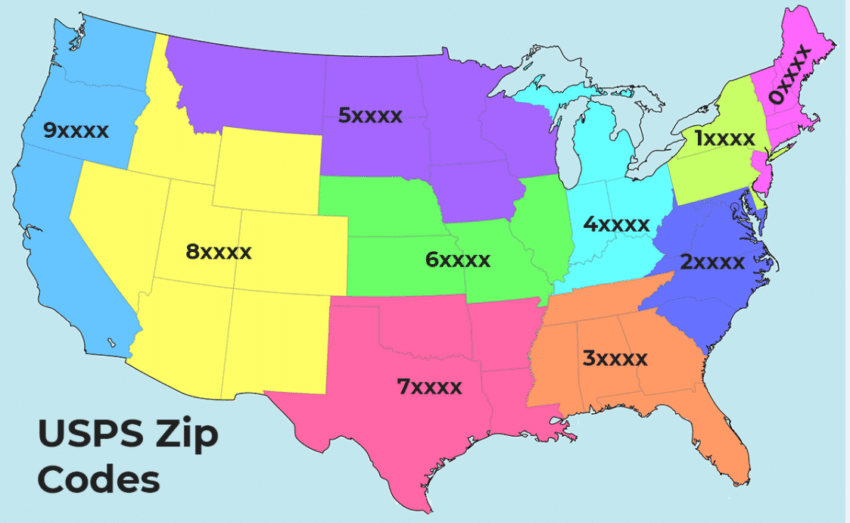
Why Use a ZIP Code Map?
These maps go far beyond mail delivery—they’re used in everything from sales territory management and market research to logistics optimization and site selection. With a ZIP code map, you can transform abstract data into clear visuals that make decision-making faster and more effective.
Here’s how they help:
Visualize Geographic Data Clearly
Instead of sifting through endless spreadsheets, a ZIP code map lets you see your data in action. It turns rows of numbers into digestible, meaningful visuals, so you can instantly spot trends, gaps, or clusters.
Detection of Patterns and Trends
ZIP code maps serve as potent tools for uncovering concealed patterns and trends within data. By scrutinizing variations across ZIP code-based data, valuable insights into consumer behaviors and preferences are revealed.
Make Smarter, Data-Driven Decisions
From planning new store locations to optimizing delivery zones, a ZIP code map gives you a practical lens to view operational challenges and opportunities geographically.
How Can You Use Your ZIP Code Map?
Once you’ve got your map up and running, various applications become available, the sky’s the limit:
Define Territories Efficiently
Assigning sales or service zones by ZIP code is cleaner and more consistent than using vague city names or hand-drawn lines. You can easily set boundaries for teams, reps, or partners.
Conducting Market Analysis
Engage in comprehensive market analysis by segmenting data based on ZIP codes. Identify high-potential areas and prioritize marketing strategies accordingly.
Analyze Market Performance
Compare how different regions perform, identify under-served ZIP codes, or plan resource allocation based on real-world data like income levels, population density, or customer distribution.
Site Selection
Finding the perfect spot for your business has never been easier. Evaluate potential business locations by considering factors such as proximity to customers, competitors, and logistical efficiency.
Tailoring Marketing Strategies
Customize marketing strategies to target specific ZIP code areas. Craft hyper-local campaigns that resonate with local demographics and preferences.
How to create a ZIP Code Map with Smappen?
Tutorial for creating a ZIPCode Map with Smappen
Let’s begin by setting the starting point for your zone: type an address or a city. Then I select the area type “Territory” and click on ZIP codes.
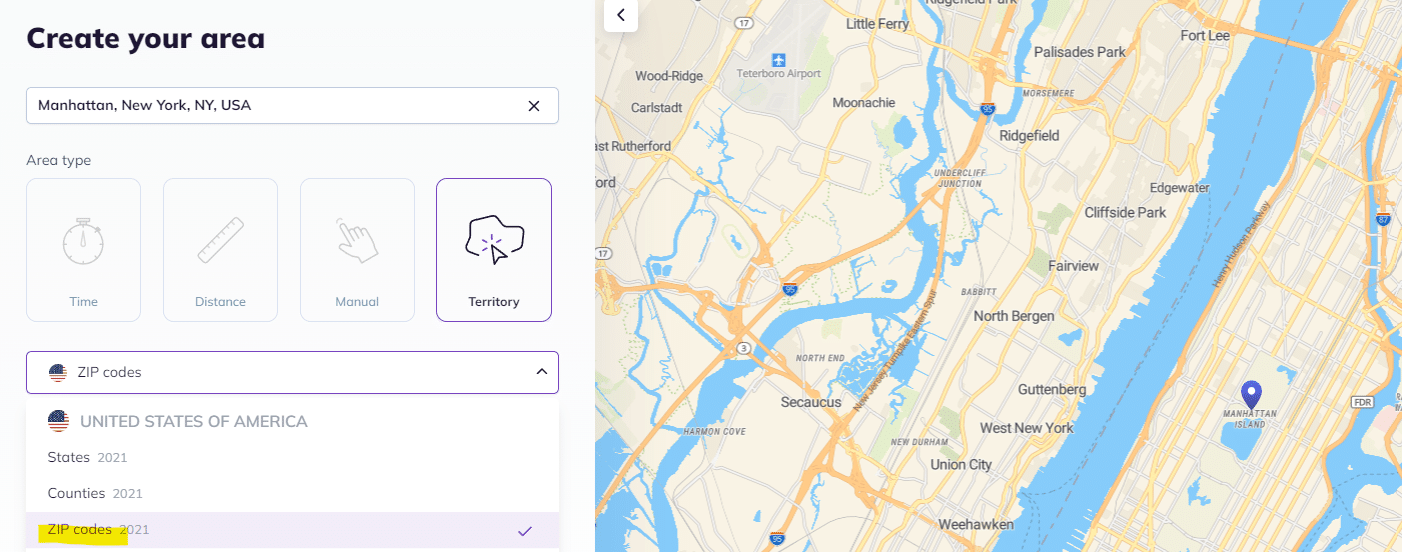
I just have to select the ZIP codes I’m interested in (I can also use the Lasso function for faster selection). And that’s it!
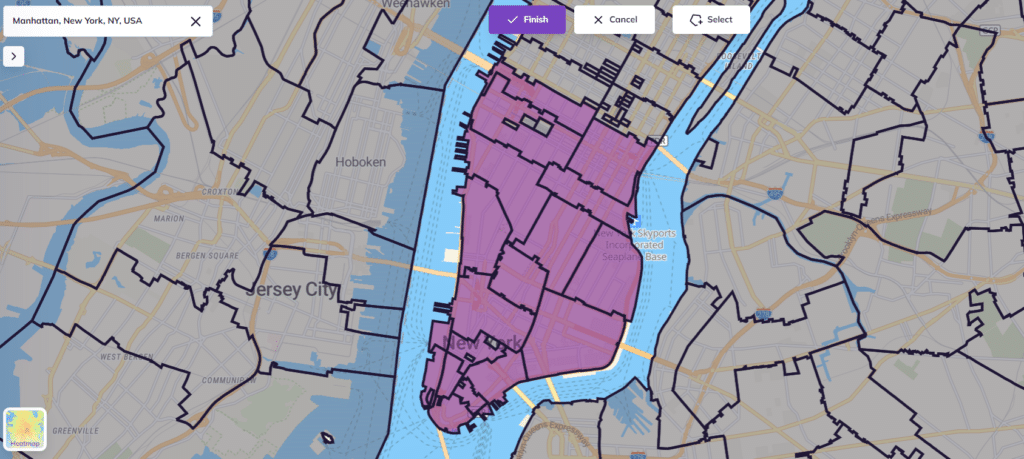
Once your map is ready, simply export the list of selected ZIPs as a CSV or text list. This is ideal for importing into CRMs, spreadsheets, or route planning tools
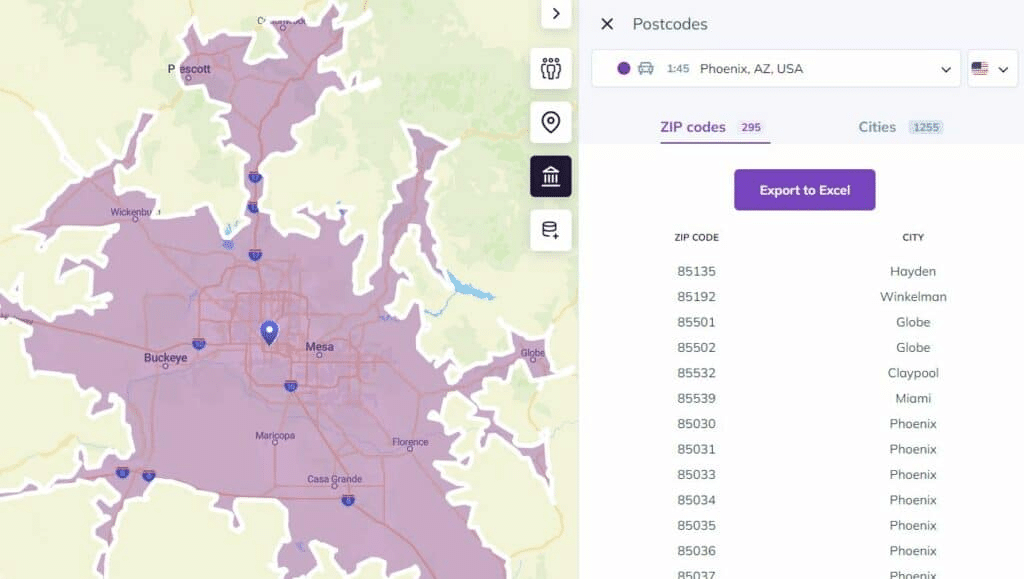
Advanced Tips to Empower your ZIP Code Map
Use Strategic Color Coding
Go Color Crazy: Using color coding can enhance the visual impact and readability of the map. Highlight ZIP code areas based on data points like revenue, conversion rates, or lead density. This makes patterns pop visually and helps with fast decision-making.
On Smappen, you can easily change the color of each of your areas.
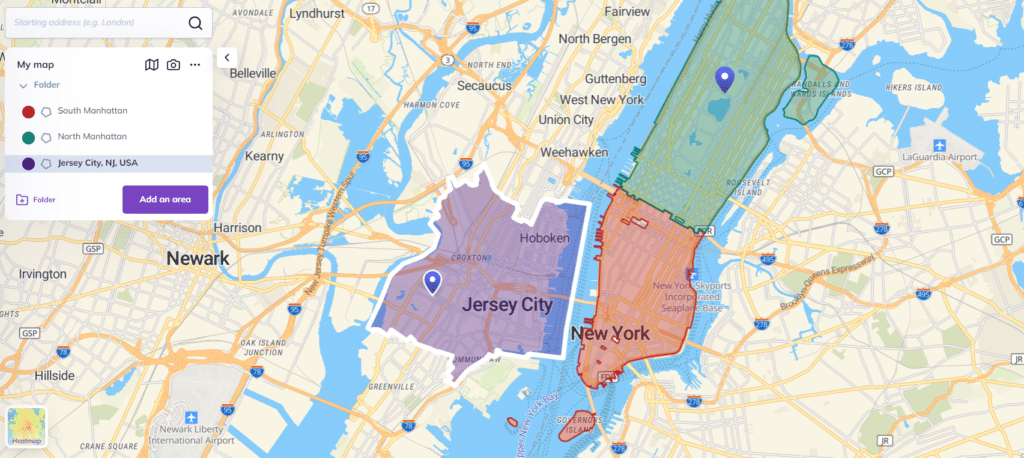
Overlay Heatmaps for Insight
Layer It Up: Smappen allows you to apply heatmap layers to visualize population density, income brackets, or other demographic markers across ZIP codes.
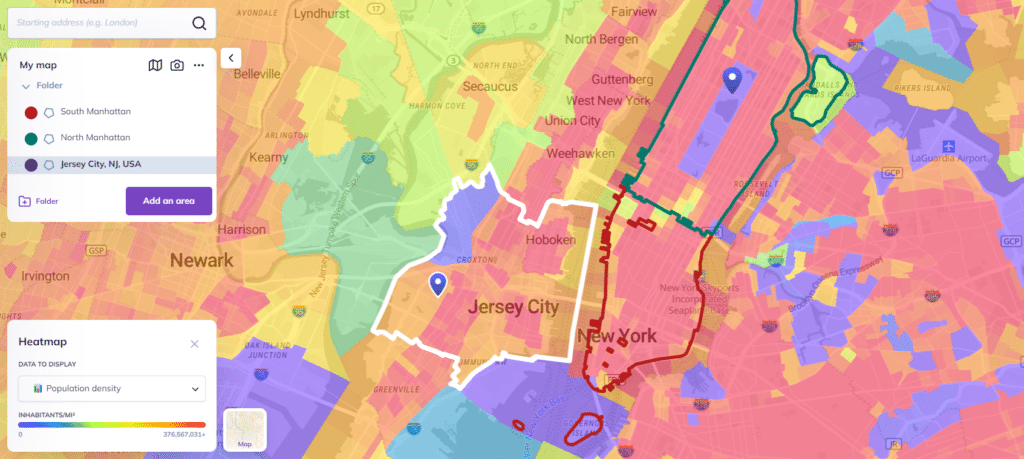
Combine ZIP Codes With County or City Boundaries
Region Wrangling: Mix and match ZIPs with traditional geographic boundaries to build complex, layered maps for analysis and planning.
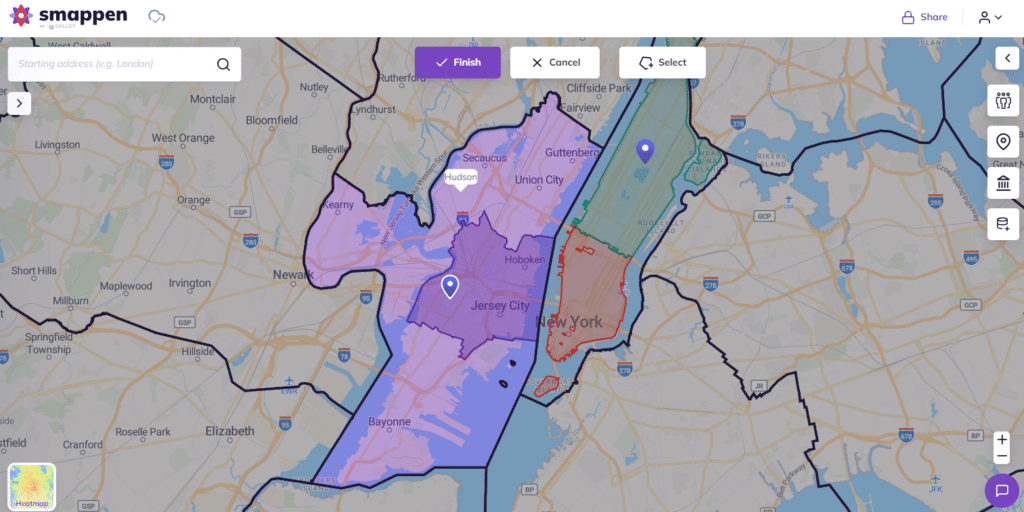
Real-World Use Cases for ZIP Code Maps
🗺️ Sales & Service Area Planning
Assign sales reps to ZIP-coded territories to eliminate overlap and ensure fair distribution.
📍 Smart Location Analysis
Evaluate potential store or warehouse locations using ZIP-specific insights like customer density or foot traffic.
📣 Geo-Targeted Marketing
Build audience segments based on ZIP codes and launch targeted ad campaigns tailored to local preferences.
🚚 Delivery & Route Optimization
Plan efficient delivery routes and territories that reduce fuel use, time, and cost using ZIP-defined zones.
Why Choose Smappen to Build a ZIP Code Map?
Smappen stands out because it’s designed for non-technical users. You don’t need GIS skills or software downloads—just a browser and a goal. Whether you’re building your first territory map or refining a multi-region strategy, Smappen provides everything you need:
- Easy drag-and-drop ZIP code selection
- Built-in demographic and business data
- Free and paid plans for teams of all sizes
- Exportable and shareable maps
Get Started: Build Your ZIP Code Map Today
ZIP code maps unlock location-based insights that fuel better decisions—from lead generation and market expansion to route planning and operations.
Try it now and create a ZIP code map in just a few clicks.
Unearth treasures of insights and navigate your way to success with the coolest map in town. Zip it, zip it good! 🗺️✨
Frequently Asked Questions (FAQs)
Smappen offers a user-friendly, free solution with powerful customization and data layering features.
Yes. You can export selected ZIPs as CSVs or lists for easy integration with CRMs or spreadsheets.
Not always. ZIP codes are based on postal routes, which can cross city or county lines. This makes them ideal for building flexible territory maps.

